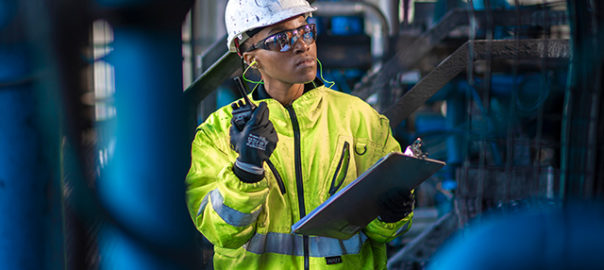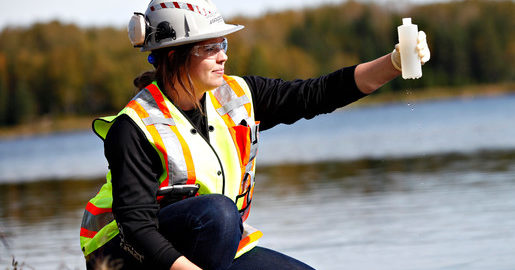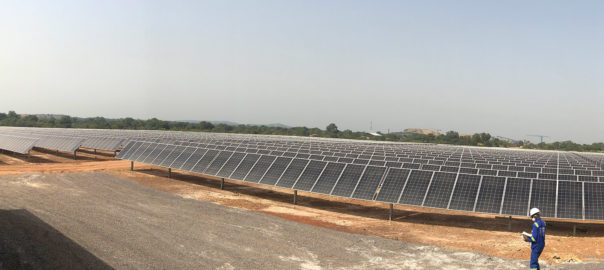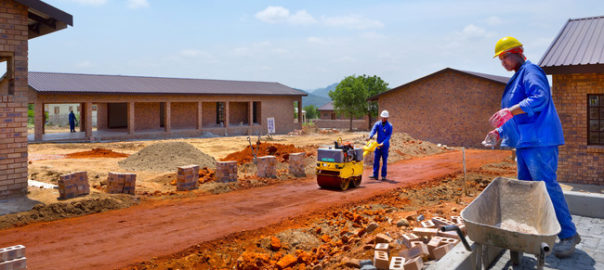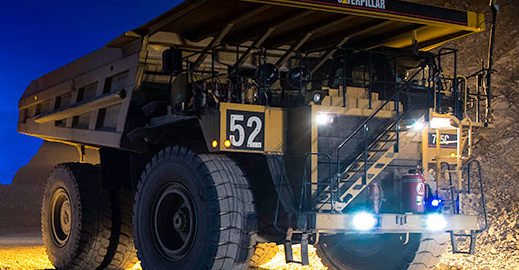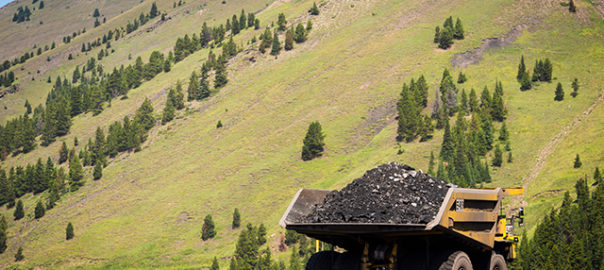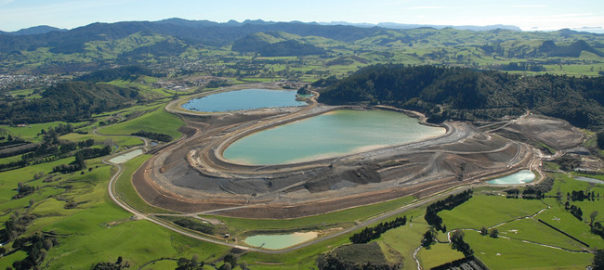As the race to net-zero intensifies, it is increasingly clear that the extractives industry has a crucial role to play supplying the raw minerals needed for decarbonisation. While navigating the balance between accessing new deposits and environmental sustainability is challenging, new methods of biodiversity monitoring offer a potential solution to minimise impacts on nature, Joe Huddart* says.
The race to net-zero is driving the fastest energy transition in history, and with the International Energy Agency (IEA) suggesting we will need to quadruple our mineral inputs by 2040 if we are to meet the goals of the Paris Agreement, there has been an emphasis on the need for the extractives industry to ensure they can meet this demand.
However, given that 20% of existing mines tracked by the MSCI ACWI Investable Market Index (IMI) are in biodiversity hotspots, accurately assessing and measuring the impact of existing and future mines on biodiversity and the environment is vital. The Earth’s biodiversity remains our greatest asset, not only acting as “our strongest natural defence against climate change” according to the UN, but also fundamental to our global economy. The World Economic Forum estimates that more than 50% of global GDP “is moderately or highly dependent on nature”.
Therefore, it is critical that risks to biodiversity are central to decision making in all sectors to drive a sustainable future in the race to net zero. Of course, this includes mining. A sector which has historically been seen as a driver of environmental degradation; destroying ecosystems within their immediate footprint while damaging communities and ecosystems beyond their area of influence via pollution and contamination.
However, coupling this expected sector growth with the fact that 20% of global mines tracked by the MSCI ACWI Investable Market Index (IMI) are located in biodiversity hotspots, accurately assessing and measuring the impact of mining operations on their surrounding environments is essential. The Earth’s biodiversity is our greatest asset, not only acting as “our strongest natural defence against climate change” according to the UN, but also fundamental to our global economy.
The World Economic Forum estimates that more than 50% of global GDP “is moderately or highly dependent on nature”. Therefore, it is critical that nature-based considerations are central to decision making in all sectors to drive a sustainable future in the race to net-zero. This includes mining, which has historically been seen as a driver of environmental degradation, while also posing health risks to communities and ecosystems exposed to the pollution it creates.
As biodiversity loss, externalities, material risks and dependencies on nature go mainstream, the importance of protecting biodiversity is reflected in the alphabet soup of frameworks that have been launched in recent years, including the Global Biodiversity Framework (GBF), Science Based Targets Networks (SBTN) and the recently announced Task-Force on Nature-related Financial Disclosure (TNFD). The latter being a nature equivalent to the earlier Taskforce on Carbon-related Financial Disclosures (TCFD) which is now incorporated into legal frameworks in many countries. The common goal of these frameworks and by those who have already adopted them, is to preserve biodiversity and establish the nature-positive practices necessary for a sustainable future. For business, there is a significant first-mover advantage for early adopters, as nature reporting mirrors the journey from voluntary to regulatory and compliance that carbon took. It is not just mining companies adopting these, but also financial institutions; with lenders, from institutional investors to banks, adopting these frameworks as prerequisites to mining customers accessing finance. This is similar to the earlier development banks biodiversity lender requirements, such as the IFC’s PS6 and EBRD’s PR6.
However, these biodiversity frameworks all acknowledge the complexity of reporting on nature impact. Compared with carbon emissions which are measured and widely traded as tonnes of CO2, the similar commodification of biodiversity is far more challenging. Biodiversity, loosely defined as the variety and number of plant and animal species in a given location, varies considerably across ecosystems. Developing standardised metrics that can be used to accurately measure, track, assess and report on biodiversity across ecosystems, from deserts to rainforests, to even coral reefs and the deep ocean, is therefore much more difficult.
While the frameworks provide businesses with a means to understand what they are required to monitor and how to disclose it within a standardised system, how to acquire the raw data needed to fulfil these requirements remains an elephant in the room. This is a shift away from species-specific monitoring of ‘trigger’ species – those that are particularly rare, threatened or indicators of ‘critical habitat’ – towards comprehensive, all-inclusive biodiversity baselining across taxonomic groups, from fungi to mammals, which comes with a range of issues and an expensive price tag.
“We cannot decarbonise without exploring, developing and exploiting existing and new mineral deposits, but we can minimise the impact this will have on biodiversity and nature”
To monitor species at the biological community resolution using conventional, observation-based methods is often prohibitively time-consuming, expensive and invasive or destructive. For instance, it is almost impossible to survey fishes at scale without using nets, which nearly always results in high mortality, with mortality often needed to identify collected specimens to species-level back in the laboratory. Even then, there is a very real chance many species are missed as nets will miss certain habitats and so datasets remain incomplete.
We also need to ask ourselves: if, during the limited time in which ecological teams are in the field, environmental teams can they reasonably be expected to encounter, detect and identify all the fauna and flora present in biological communities? This is challenging in some of the species-poor regions of the world, but near impossible in the richest, the biological hotspots where many mines will need to be located. Then there are the considerable health and safety risks of having such teams in the field for extended periods of time to contend with, too.
The rise of nature intelligence
Thankfully, the last few years has seen the emergence of innovations in ‘nature intelligence’ technology, such as environmental DNA (eDNA), which are equipping companies with the means to measure nature accurately and cost-efficiently on a scale never before seen.
All life on earth – from bacteria to blue whales – leaves tiny traces of DNA in its environment. eDNA technology allows us to sample the environment for these fragments of DNA to reveal a complete picture of the biodiversity of that ecosystem. eDNA surveys allow organisations to survey for and identify at-risk invasive or protected species, alongside wider biological groups, simultaneously. This establishes comprehensive biological baselines from which changes in biodiversity, good and bad, can be detected. This allows companies to link activities to impacts and so better understand biological risks, monitor progress and guide the implementation of effective management actions.
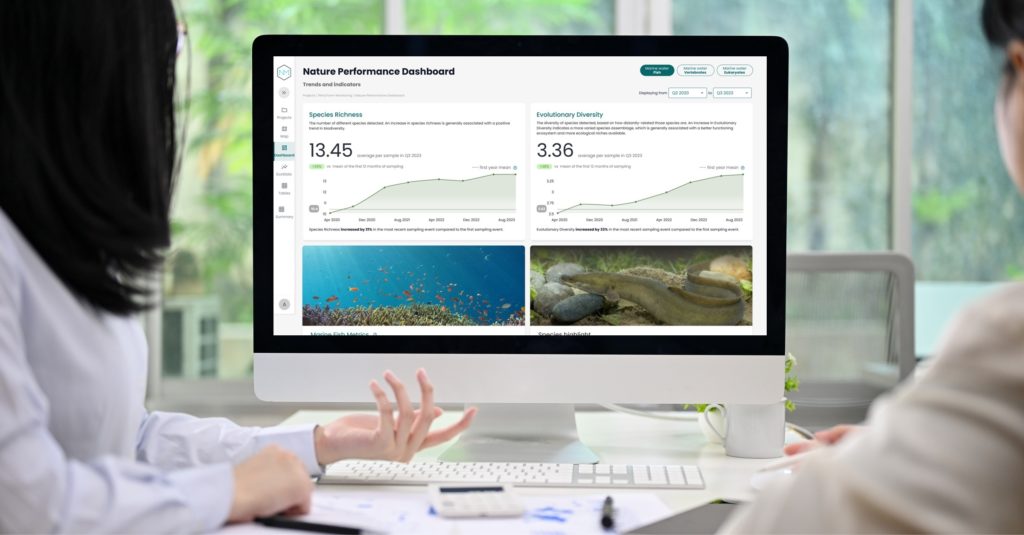
Combining eDNA surveying with other nature intelligence technologies that capture the complexities of nature, such as Earth observation/GIS, bioacoustics and drones, is proving a game-changer. The granular scale at which biodiversity can be repeatedly monitored and assessed is enabling companies to track, understand, report on and, above all, better manage their operations’ relationship with nature.
Moving the dial towards nature-positive in mining
As it ramps up operations while faced with increasingly sophisticated biodiversity regulations, the mining industry is in a difficult position. The Lassonde Curve, the time from discovery to commercial extraction, still takes some 16 years; closing this gap will be vital to meet decarbonisation goals. However, this should not result in the loosening of environmental standards or ‘red tape’ and so come at the expense of already beleaguered biodiversity and the environment. If anything, quite the opposite. In conjunction with nature reporting, the need to speed up mining developments should catalyse the adoption of increasingly sophisticated environmental management by the mining sector through the deployment of nature intelligence to improve the quality and scale of biodiversity data. This will not only demonstrate improved due diligence and ‘going the extra mile’ to produce better environmental impact assessments but enable regulators to make faster decisions.
Many companies, including Anglo American, Sínese and Rio Tinto have already found success using these technologies for different purposes to support their drive to nature-positivity.
For Anglo American, eDNA has transformed their biodiversity monitoring across the project cycle, and they have deployed the technology in 16 projects across 11 countries since 2020.
Warwick Mostert, Biodiversity Principal at Anglo American, believes eDNA monitoring has “huge applicability…[firstly] in the discovery and exploration phase, where knowledge is limited about the potential biodiversity risk in the area…[also] when a mine is in full operation, it will become a key part of the ongoing monitoring and evaluation in terms of biodiversity performance…[and] when we start to get to the point where an operation is coming to closure, it will allow us to make sure the work has been done and we can meet our objective of restoring an environment to better than its pre-mining state”.
The International Council on Mining and Metals (ICMM) has also noted the useful potential of the data that mining companies can generate, saying, “Mining companies can play a huge role in contributing biodiversity and environmental monitoring data in areas where such data has typically been scarce. Technologies like eDNA can also be used to unlock new pathways in democratising the collection of and access to data. More radical participation, transparency, openness and access to data is required to shift us towards a nature positive future. This should be at the core of both developing and implementing any corporate nature positive strategy.”
The mining industry has found itself at the nexus of two existential crises, climate and biodiversity. We cannot decarbonise without exploring, developing and exploiting existing and new mineral deposits, but we can minimise the impact this will have on biodiversity through nature intelligence. This will play a key part at all stages of the mining life cycle, ensuring mines can improve their management of biodiversity and that this can be reported efficiently in the incoming frameworks.
Lastly, we have to remember that mines have a lifetime, and mine closure is a vital yet historically neglected stage in the life of mine cycle. Nature intelligence can assist here to ensure mines are demonstrably rehabilitated and handed back to communities in a decent biological condition that does not constitute an ongoing risk to humans, fauna and flora, but can actually benefit local communities and ecosystems. All biodiversity impacts are environmental impacts and – given our dependency on natural systems and ecological functions – all environmental impacts are ultimately social impacts. Nature intelligence will therefore ensure we embark on a mining trajectory that improves outcomes for both nature and society.
*Joe Huddart is Subject Matter Expert and Freshwater Ecologist at NatureMetrics









